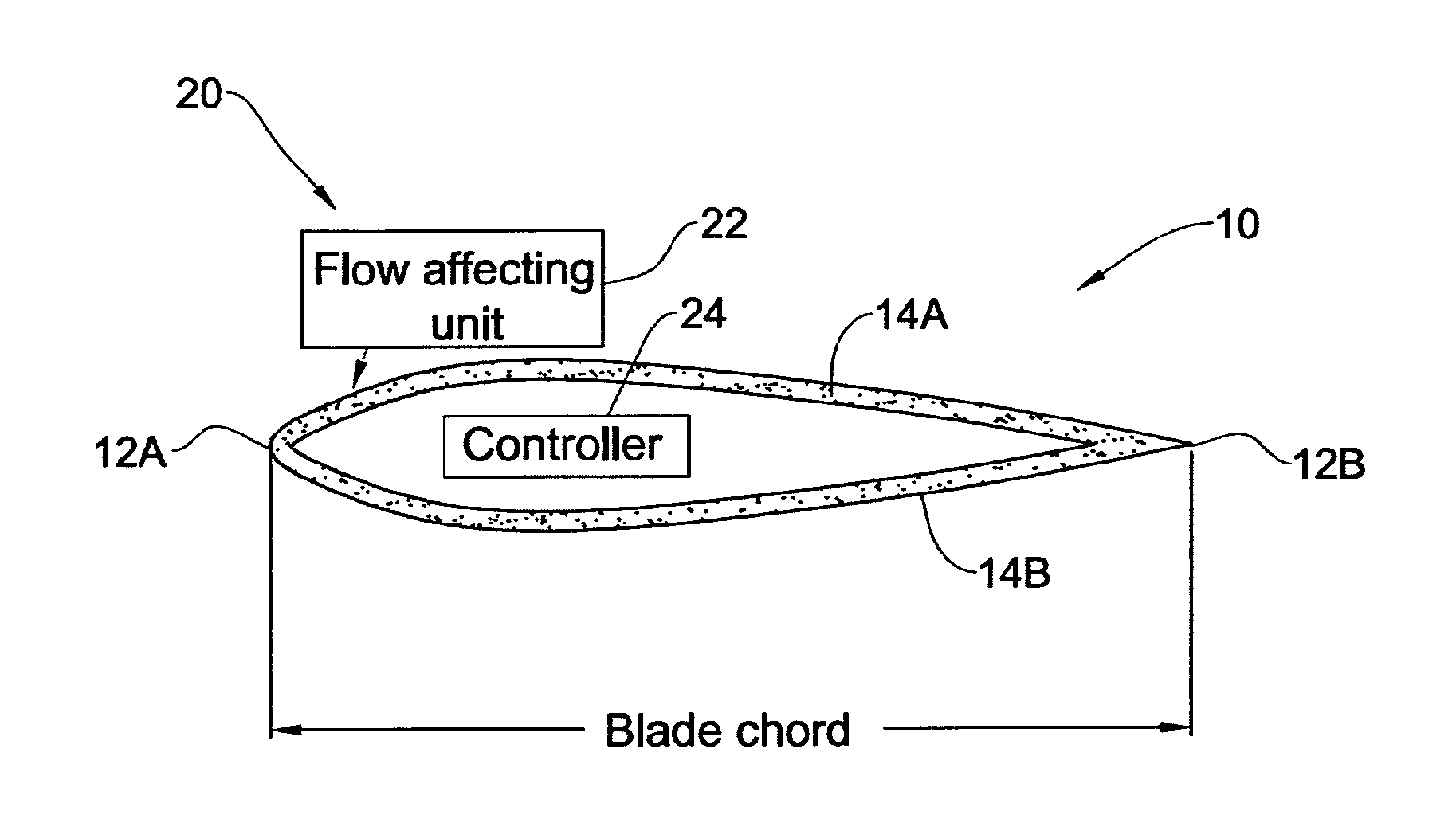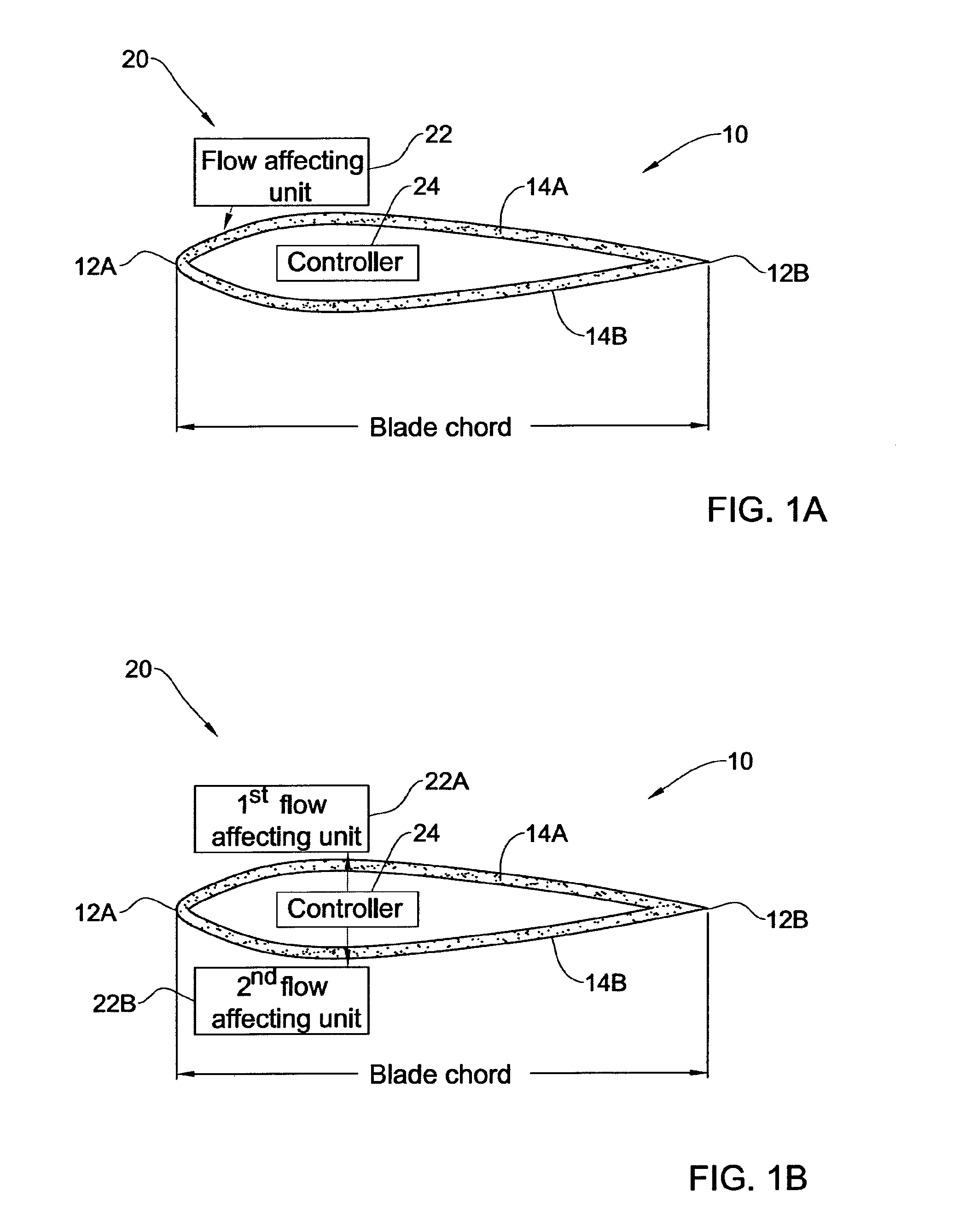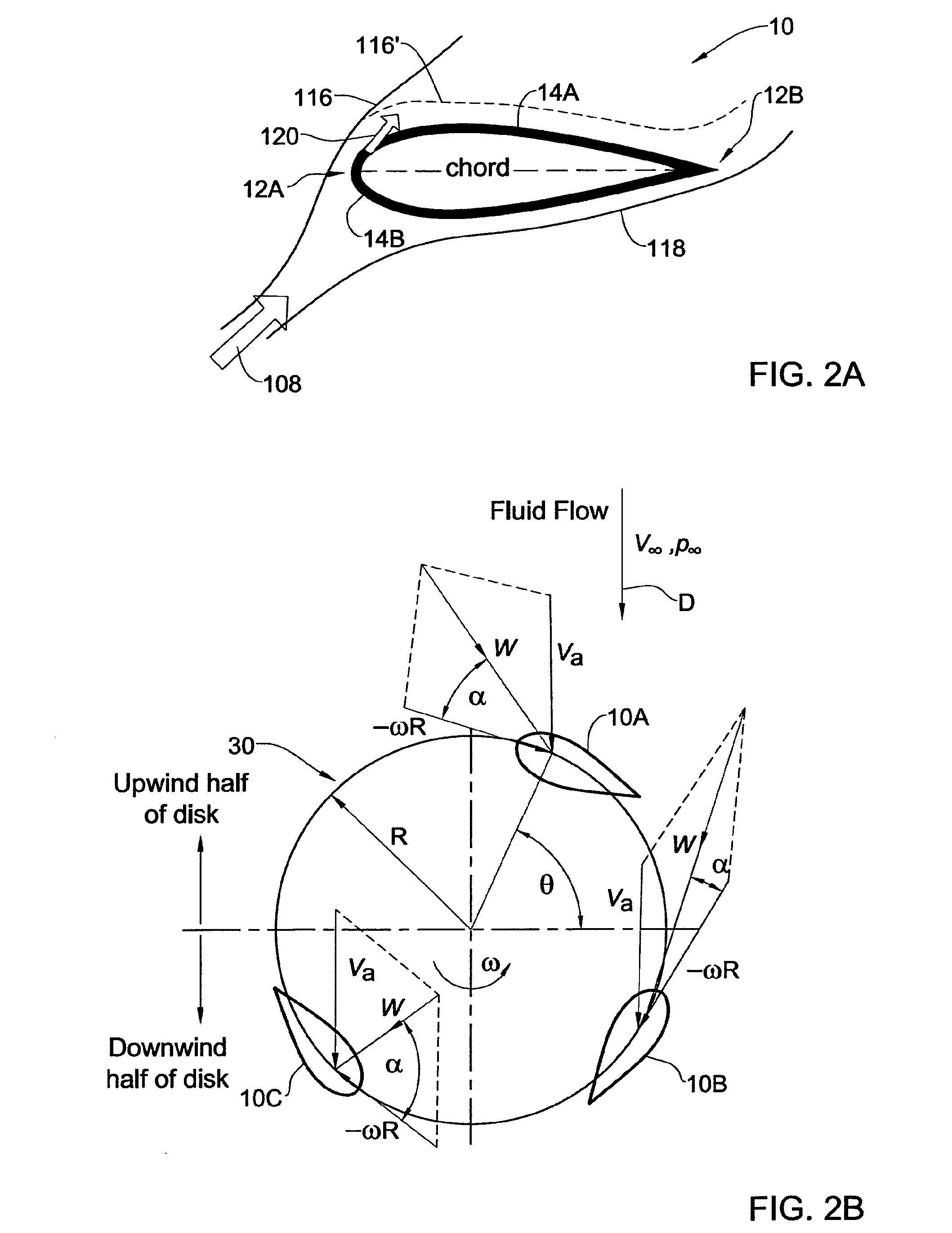Flow control on a vertical axis wind turbine (VAWT)
a technology of wind turbine and vertical axis, which is applied in the direction of propellers, motors, transmission, etc., can solve the problems of reducing output power and stall conditions
- Summary
- Abstract
- Description
- Claims
- Application Information
AI Technical Summary
Benefits of technology
Problems solved by technology
Method used
Image
Examples
examples
[0100]Reference is now made to the following examples, which together with the above descriptions illustrate some embodiments of the invention in a non limiting fashion. The following are some computations based on experimental data carried out by the inventors to compare power generated by a blade in a VAWT of the present invention with a power generated by a typical VAWT blade which does not impart any momentum to air flowing thereon.
[0101]Experiments were performed of a NACA0012 airfoil with an 9-inch chord (c) and 24-inch span (203 mm×610 mm) that was equipped with fifty surface pressure ports and a two-dimensional leading edge active flow control slot of width hs=0.6 mm. Sections of the airfoil's ribbing were removed to render an essentially hollow interior which served as a plenum chamber. A roughness strip (Grit #100), used to trip the boundary layer, was fixed to the leading edge and extended to 4% chord on both top and bottom surfaces. Surface pressure data was augmented by...
PUM
 Login to View More
Login to View More Abstract
Description
Claims
Application Information
 Login to View More
Login to View More - R&D
- Intellectual Property
- Life Sciences
- Materials
- Tech Scout
- Unparalleled Data Quality
- Higher Quality Content
- 60% Fewer Hallucinations
Browse by: Latest US Patents, China's latest patents, Technical Efficacy Thesaurus, Application Domain, Technology Topic, Popular Technical Reports.
© 2025 PatSnap. All rights reserved.Legal|Privacy policy|Modern Slavery Act Transparency Statement|Sitemap|About US| Contact US: help@patsnap.com



